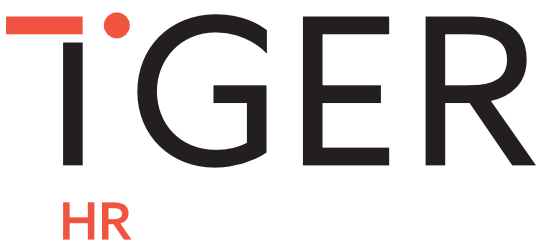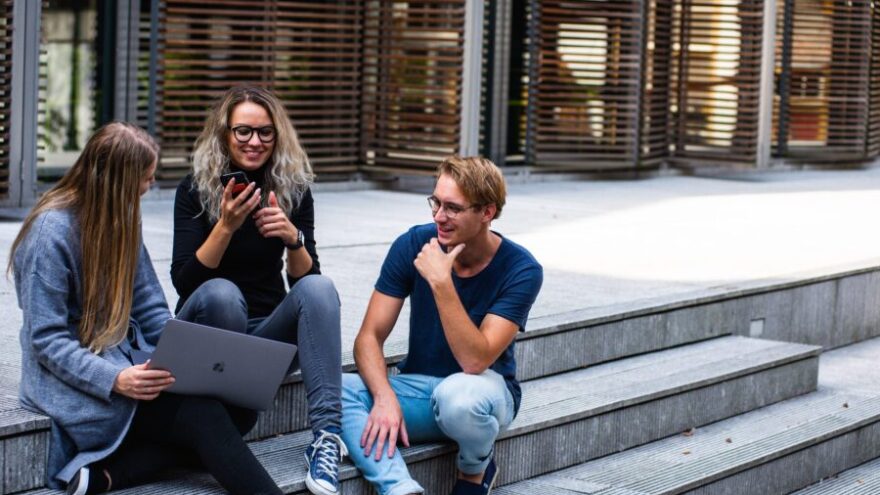Are you an HR professional looking for guidance when it comes to creating a plan for your work post-COVID-19? Our Head of Marketing and Communications, Coralie Fernando, interviewed Erin Taheny, Head of HR and Operations here at Tiger, on how we’re planning for Tiger’s return to the office in London.
Erin started at Tiger mere weeks before London went into lockdown, so her experience has been incredibly unique! In the interview, they discussed how Tiger is approaching the return to the office post-COVID-19. They discuss the main concerns for our employees, the importance of conducting employee feedback surveys and risk assessments and how important communication has been throughout the process. Listen to the podcast and read the full transcription below.
Podcast Q & A
We’d love to learn a bit more around your pandemic response from an operations and HR standpoint, what it means for employees and what the return-to-work plan will look like if possible. Could you give me an overview of all of the considerations that you have in place for returning back to the office when it happens?
Yes. So we had a goal day, set through conversations with the MD, CEO, of making sure that the office was ready to have people back in from the first of June, even if we weren’t going to ask staff to be back in from that date. We just wanted to make sure we were happy that things were in place and that should government guidelines change, we were kind of ahead of things – we weren’t waiting for deliveries and things like that. So, we wanted to get started on that as early as possible. We’ve been planning the return to work literally from a few weeks into the whole thing…so, cleaning products, sanitizers, we have provided masks because again, we weren’t sure if the government were going to say that they were a requirement and that employers were going to have to provide that for employees — we didn’t want to be caught out.
But I do think [masks] are useful as an extra sort of measure, to provide them for staff even if they want to use them for commuting or going out to the communal areas. We’ve put up safety posters around the office. The office has been deep-cleaned and we’re been looking at the space that we have there because we have quite a number of people in three not extremely large or spacious offices but are absolutely fine — probably very similar to lots of people’s businesses.
And so we’re looking at how we could make the best use of that space whilst adhering to the social distancing sort of rules and guidelines. So, we’re looking at perhaps an alternating shift-type style with initially, people working from home for the rest of the week. That would obviously allow us to space out and have fewer people on the pods at one time, which obviously makes people feel a lot more comfortable as well. We did look at considering things like screens, but I think for the time being, whilst we’ve got the ability to enforce distancing, we don’t need to look at that. Perhaps further down the line, if we have got more people back in the office and things are still a little uncertain, it may be something that we look at.
Can you tell us a bit about the staff survey as well?
While speaking to other people — HR professionals and some of my peers that I keep in contact with — a staff survey was one of the big talking points. And so we sent one out and we kept it not too in-depth — we just wanted to get a broad kind of sense of how people were feeling. What were their biggest concerns? And what would be the biggest impact on them being asked to return to the workplace? It was an opportunity for people to feedback information confidentially, so they could be quite open as I would be the only person that received those surveys. And then I shared key findings with the more senior team. So yeah, that was really interesting.
It provided a good opportunity as well for people, that perhaps their situations at home had changed, some people caring for vulnerable people. Obviously, those with childcare issues as well. And it also helps us not make assumptions, because some of the people with childcare who perhaps we would have thought would have been more impacted actually had other measures in place and were more able to return than we would have thought. So it was a really useful tool. Definitely a good idea to do and we probably will do another. Okay. I mean, we may come on to talk about that anyway. But after we’ve sent out the risk assessment to staff, I think we’ll do a staff survey a little bit nearer the time just to check that people are feeling comfortable.
When are you planning on sending the risk assessment?
So, we don’t want to send it prematurely. It’s done, it’s completed, it was in line with wanting to make sure everything was in place for the first of June. I actually travelled into the offices myself on the first of June just to finish that set up and do a bit of a walk-through and speak to the building management contacts that we have at both premises in London. I just wanted them to walk me through the measures that had been put in place, as I had seen their reports, they’d obviously shared that with me, but I hadn’t seen it physically, myself. So, I just wanted to run that through as well.
Yeah, so we would share the risk assessment. I’m conscious that a big part of the return to work is obviously making things physically safe for people. But there’s a huge piece around the emotional wellbeing of staff as well. Even with sending the staff survey out a few weeks back, I think it initially concerned a few people that they thought perhaps we were looking to do it immediately. And so with the risk assessment, I want to send it as close to the time that we’re thinking about returning as possible. But, obviously, with enough of a period in between for people to come back and challenge or question anything that they’re maybe not clear on and for us to amend if needed.
What would your advice be for larger companies, as in how far can they tailor feedback from a staff survey to inform a return-to-work plan?
There’s always going to be some sort of compromise, I think from both sides. You know you have to, especially in the HR role, you have to make sure the business is protected, but you have to make sure the individuals in that business are protected from the business as well. So, you know, it is kind of in that sort of halfway house. So, I think larger companies have, in my experience, and again, from just talking to other professionals, perhaps have a slightly better setup for home in place, so that’s usually quite helpful.
I know a number of companies who have actually seen an increase in productivity when they’ve done some reporting from people working from home. So I think there’s a big case, therefore, if people aren’t feeling 100% confident, but they have performed well, whilst working from home, then I think there’s, you know, an opportunity to keep that option.
I mean, ultimately, if you’ve provided people with a safe environment and a risk assessment, that should be good enough grounds to kind of ask the staff member to come back in and [while] they do have the legal right to say they do not feel safe, they then need to be able to show sort of a justifiable reason of what it was that didn’t make them feel safe at that time. You do need to be careful as an employer, definitely, because it is a little bit more on the side of the employee when it comes down to safety, just because Coronavirus is seen as a threat and danger in regards to kind of level of significance. And so it just needs to be treated quite carefully.
What would you consider to be your main concerns about transitioning back?
We’ll have two phases with our transition because we have staff on furlough. So there’ll be the return to just actually working, which may be returning to working from home, or for some people who come back a lot later in furlough — we can’t predict how things are going to work out over the next couple of months — it could be that it’s a return to work and to the workplace, which is sort of a double sort of whammy there for people.
So, I think we need to be mindful of that as well and pay particular attention to those that are not only just starting the journey back into the office but also starting back to work.
So, really key that we’re going to have scheduled, return-to-work meetings with line managers, one, to sort of talk through obviously the handover back with passing back their work, but also two, just to talk about any changes in process, changes in systems or any updates to the business that have happened whilst that person has been away.
From the physical perspective, [out of] the three kinds of key areas that were flagged in the staff survey, the commuting was a big issue. So, where we’ve signed up to the cycle-to-work scheme and [will] offer that to employees. We’ve got information to share, along with a risk assessment on the Santander bikes or Boris bikes as they’re known, and the app that you can download to use those. And, we will offer more sort of flexible hours and they’ll need to be agreed in advance because ultimately, we’re a business that works with other people and we need to be on hand for our clients at certain times. But, allowing people to travel in more off-peak times, if cycling or walking isn’t an option for them, maybe tweaking their hours so that they can leave to catch certain trains if their transport isn’t quite up and running. So, commuting was one of the big ones.
I think the other pieces, obviously, [include] the space within the office. We obviously want to adhere to the social distancing but at the same time, it’s a recruitment business — [for the] consultants, it’s a sales environment that they sort of thrive in. They’d like that buzz and the ability to bounce with one another as I’m sure lots of people do. And so, we want to make sure we look at how we split the shifts and the alternating days so that we get the right balance of personalities and people that work together that’s most efficient to get the most work done, but also to keep morale up.
I think it would be quite demoralising for staff if they think “great, we’re going back to the office”! And when they get there, the reality is it’s very different to the environment they left. So, we want to, as part of that emotional piece, just sort of try my best to provide the best kind of environment for that kind of vibe, as well as physical.
And then I think it is just individual circumstances and just making sure that we’re respectful and understanding and sort of, again, respect people’s confidentiality if they’ve got their own personal circumstances. [Also] making sure we’re keeping the comms to the wider business to a significant enough level that people understand why perhaps they’re being asked to come in and someone else isn’t. Again, just ensuring that people feel like everyone’s being treated fairly and things like that as well. So practical things, obviously, communal spaces and things like that. But I think a big part that can’t be ignored is again, the emotional and mental wellbeing of the staff because it’s obviously been such a strange, difficult time.
The prospect of going back in and commuting could be such a shock to the system. And for many people, if they’ve suffered bereavements etc, I can imagine it would be quite disorienting to go back into an office environment full of people. And I would imagine for a lot of offices that the culture will change as well, particularly people on shifts and halving the amount of employees that are in the office at any one time.
Yes, I think that’s it. I mean, in one way, I’m slightly lucky. And that’s one thing out of this because I didn’t really have a chance to get to know the business properly in the normal world if you like. And to me, this is almost how this job is, I work from home and I talk to everybody on the phone. And that seems normal. I think it will be a real shock and it’s going to take time before the things that you associate with your job, like popping out for a drink and colleagues, going out to grab lunch, and all those kinds of things can come back as well. So we just [have to] be aware of that and like you say, things that happen in people’s personal life. Perhaps their own weddings have been postponed or hen dos and things like that.
A number of businesses are completely redesigning their flexible working policy as a result of this. Can you talk a little bit about what you foresee or how you foresee our flexible working policy being impacted in the long term?
So, there are some people on different policies to others. The company is very good at hiring people who had different sorts of life circumstances and tailoring hours to suit, so that was obviously a fantastic part of the business. And then those that were on the sort of more standard hours, if you like, did have sort of a late start every week and an early Friday finish every other week. So that was also quite nice.
[In] the work-from-home piece, we’re probably in the camp you talked about there with the kind of slight reluctance to have a lot of the work from home. So I think, you know, it may be one of the real positives that come out of what’s been happening — I think it’s really important to try and focus on as many positives as well at the moment — that we do bring flexible working in and the work from home piece especially as an option longer-term.
We’re having discussions about that, but again, I think until we have even gone back to properly working and things have picked up, it will be hard to say exactly what that looks like. But it’s definitely a consideration. And I think that we’ve seen a fantastic effort from all staff. Right from the beginning, people were really throwing themselves into it. And I mean, at the moment, we’re running on much lower numbers. I know everyone, especially in my team within the operations support, are working flat out. If anything, being able to work from home is helping conserve a little bit of energy that they would have normally used maybe for commuting and getting up very early hours and things. I think that they’re able to channel that energy into what we need from people at the moment to keep the business going. So yeah, I think we’re definitely seeing the benefits of offering that to staff, definitely.
It’s so true, isn’t it? There’s nothing more demoralizing than working late in the office till whatever time, and then having to jump on a tube and get home to have some miserable leftovers! That’s a whole other topic in itself, but the flip side of working from home is that you do end up just going and going and going sometimes. If you’ve got lots to do, it can be very difficult to switch off.
That’s definitely true. And I mean, I definitely relate because I have a very long commute on both sides – three hours a day. And so, you know, that has been again one of the positives because it has been quite a demanding role. I know for lots of people — definitely, for me trying to learn the job, do the job and help the business through the crisis — having that three hours back and knowing that when I switch off I can just move those few meters to my sofa, you know it actually helps me really throw myself into the day. I don’t have to dread that commute or that early five o’clock alarm!
As an HR professional, what are the main things that you’ve learned from the pandemic itself?
Aside from “don’t start an HR role at the beginning of a pandemic”?! If anything, it has reaffirmed a lot of things, which is that communication piece is just so valuable. And I think it’s so important people don’t undervalue the importance of good comms working from home — you can’t be a lazy communicator and people can’t see your facial expressions. People can’t just quickly nip to your desk and you have to make sure you’re picking up the phone, not assuming that people are okay.
That, topped with really unique and, you know, unprecedented situations such as furlough. Just making sure you’re sharing as much information as possible, [as] it can be very easy to think because you understand something that it’s clear to somebody else. We’ve made the mistake ourselves. And you know, everyone naturally is human and makes mistakes, but we’re constantly trying to improve our comms.
We’ve made more use of the HR system that got implemented at the beginning of the year, just before I started, making sure we’ve started up more of an intranet and that we’ve got updates coming from various departments in the business to everybody. So, I think the biggest thing for me would be that comms piece.
And, also just how much you should speak to peers and other professionals who are going through the same thing and really rely on your networks. I think that the sharing of information is really helpful. It ensures you’re doing the best for your business, and your knowledge and understanding is as up to date as it can be. It’s a bit ever-changing in the situation, unfortunately, so you think you’ve got your head around something and ultimately, the bar shifts again the next week. But, like I’ve said earlier, the webinars and forums and things that I’ve been using have been absolutely invaluable. So I think yeah, that that networking piece is really important. I’d say those are my main things.
—
If you’re an HR professional, here are some of the resources that Erin has found helpful when navigating Tiger through the pandemic:
- XpertHR [1]– great for webinars, especially for understanding the job retention scheme and policy guidance
- HR Grapevine [2] – interesting articles and webinars. They also host events which may be useful
- The REC [3] – always a good place to go if you have legal questions. While they have been inundated, they respond to all voicemails on legal questions within 24 hours
- Business Forums International [4] – great for conferences, virtual events and webinars
[1] https://www.xperthr.co.uk/
[2] https://virtual.hrgrapevine.com/hr-tech-2020/agenda
[3] https://www.rec.uk.com/
[4] https://bfi.co.uk/



